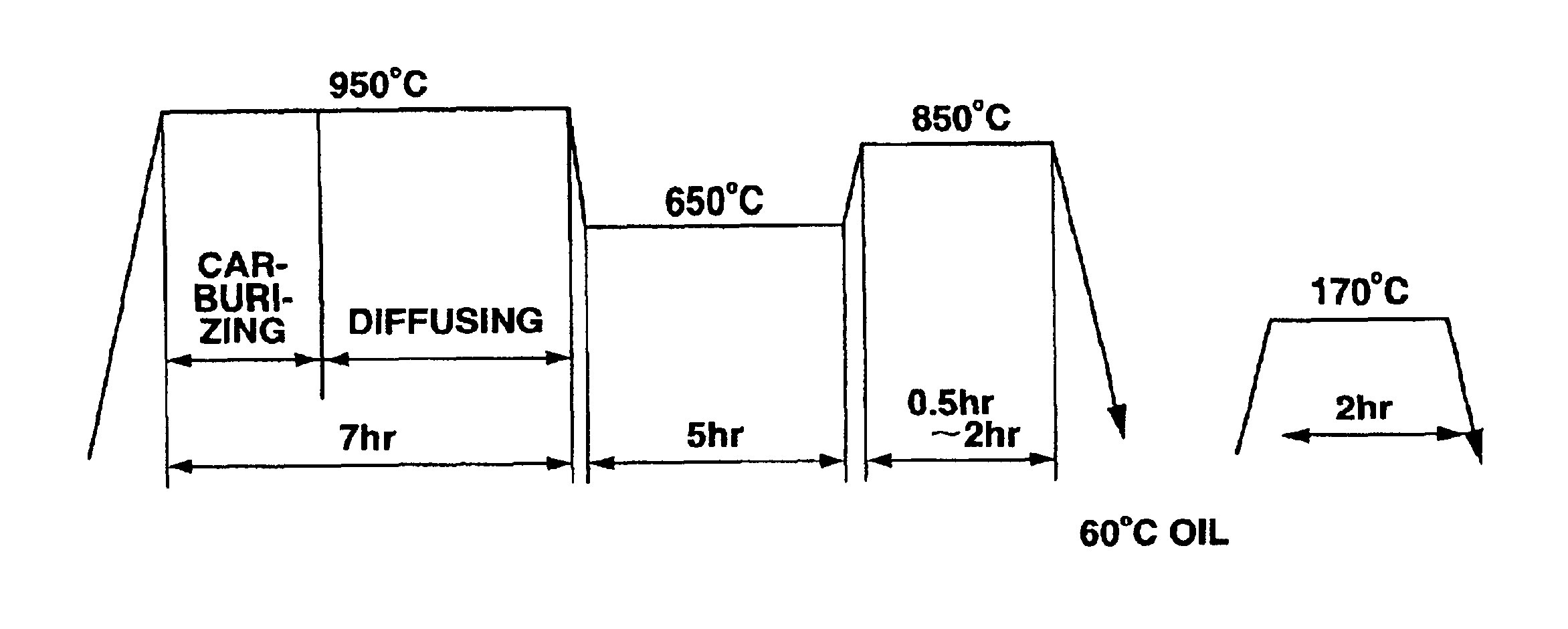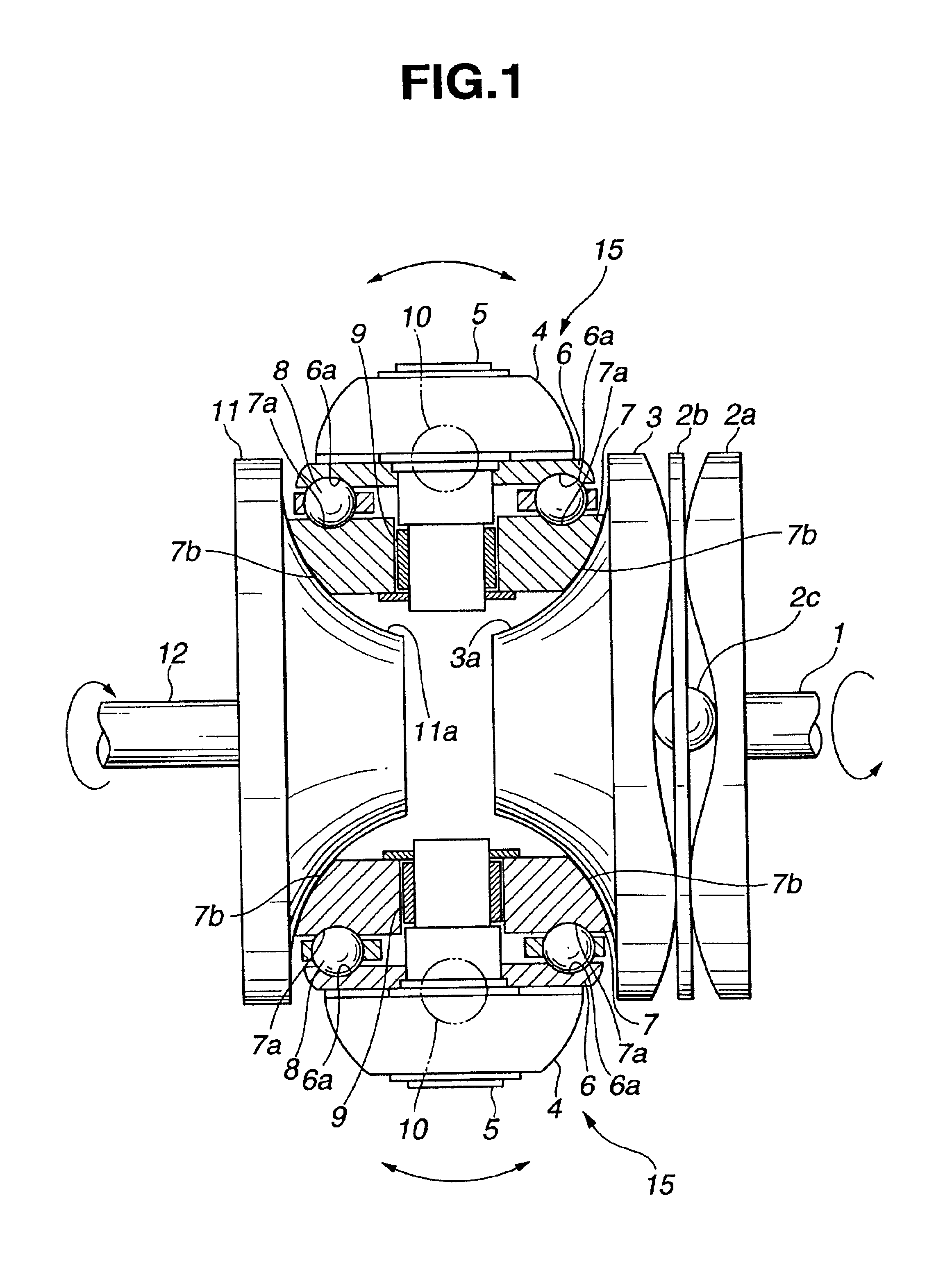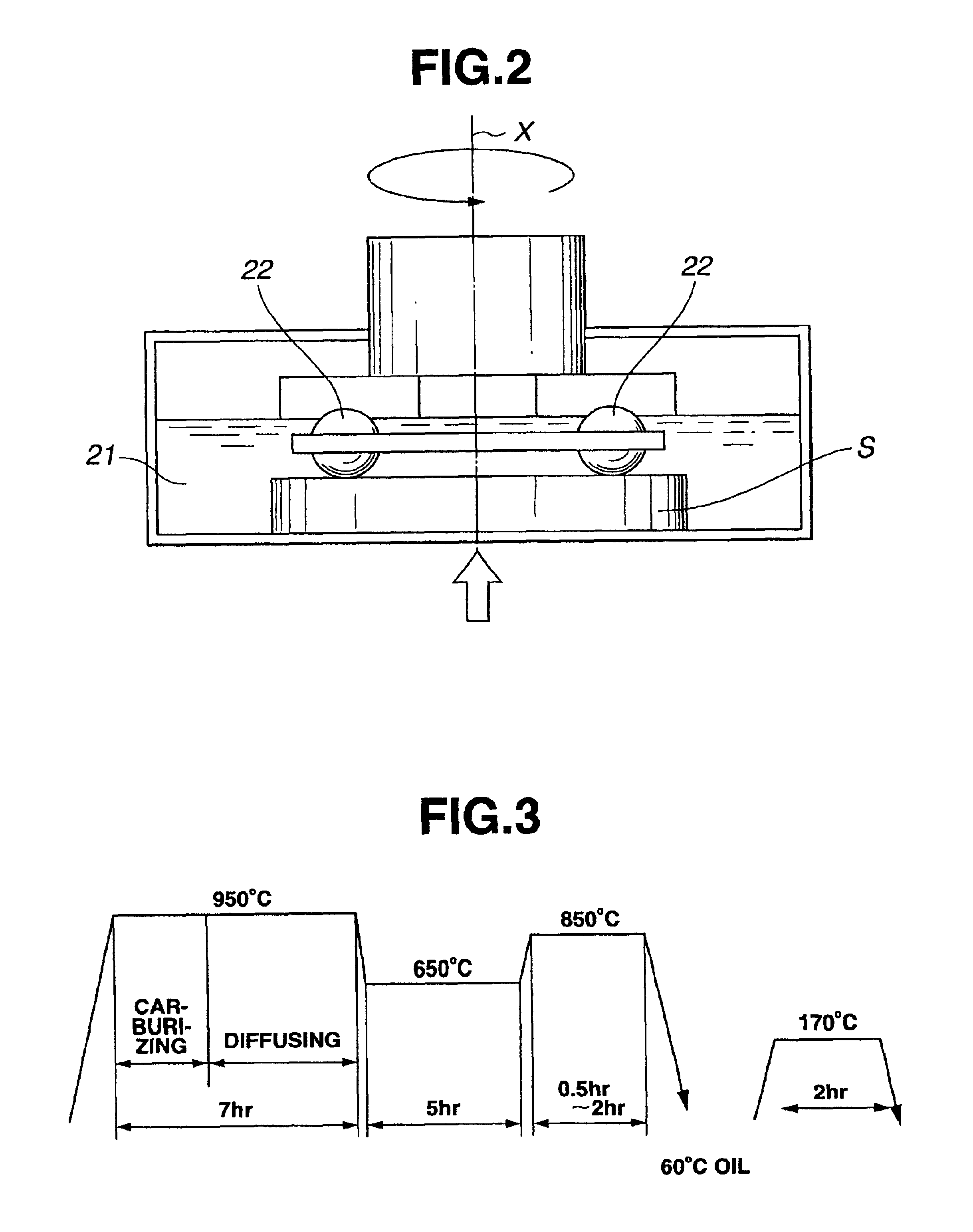Rolling element for a continuously variable transmission (CVT), a CVT using the rolling element and a method for producing the rolling element
a technology of continuously variable transmission and rolling element, which is applied in the field of rolling element, can solve the problems of deteriorating rolling contact fatigue life of the races, flaking or peeling, etc., and achieve the effects of improving the volumetric capacity of the cvt, reducing the dimension thereof, and improving the fatigue strength of the rolling contact portions
- Summary
- Abstract
- Description
- Claims
- Application Information
AI Technical Summary
Benefits of technology
Problems solved by technology
Method used
Image
Examples
examples
[0047]The present invention is described in more detail by way of examples and comparative examples by referring to the accompanying drawings. However, these examples are only illustrative and not intended to limit a scope of the present invention thereto. In the following examples and comparative examples, a surface microhardness, a surface Vickers hardness and a rolling contact fatigue life were measured and evaluated by the following method.
Evaluation of Surface Microhardness
[0048]Hardness distribution in an outer surface layer of a specimen in a depth direction thereof was measured using a microvickers hardness tester (Full Automatic Microvickers Hardness Tester MF-IV2000, manufactured by NIPPON STEEL CO.). A load of 10 g was applied to an indenter of the microvickers hardness tester. The value measured at a depth of 5 μm from the outer-most surface of the outer surface layer was determined as the surface microhardness.
Evaluation of Surface Vickers Hardness
[0049]Hardness distrib...
examples 1-7
[0051]The specimen was prepared in the following manner. The specimen as a workpiece was made of steel for machine structural use which had a chemical composition shown in Table 1.
TABLE 1SteelSampleChemical Composition (mass %)No.CSiMnCrNiMoVA320.21.00.32.02.00.70.2
[0052]The specimen was subjected to rough machining and heat treatment shown in FIG. 3, to provide a hardened outer surface layer. The specimen was subjected to carburizing, quenching and tempering under the heat treatment conditions shown in FIG. 3. The carburizing was carried out using a plasma furnace. In Examples 1-7, the ratio between carburizing time and diffusing time, and keeping time at 850° C. were appropriately adjusted so as to control a surface hardness and a surface residual austenite content in the outer surface layer of the specimen. Subsequently, the specimen was subjected to grinding with a machining allowance of 0.2 mm. The machining allowance was determined so as to completely eliminate a surface abnor...
example 8
[0059]The specimen was prepared in the same manner as described in Examples 1-7, except that the specimen was not subjected to grinding before shot peening. The specimen before and after shot peening was subjected to the same evaluations of the properties as described in Examples 1-7. The rolling contact fatigue life test was carried out to calculate the L50 life and the Weibull coefficient in the same manner as described in Examples 1-7. The results of the evaluations and the calculations were shown in Table 2.
PUM
| Property | Measurement | Unit |
|---|---|---|
| Pressure | aaaaa | aaaaa |
| Percent by mass | aaaaa | aaaaa |
| Percent by mass | aaaaa | aaaaa |
Abstract
Description
Claims
Application Information
 Login to View More
Login to View More - R&D
- Intellectual Property
- Life Sciences
- Materials
- Tech Scout
- Unparalleled Data Quality
- Higher Quality Content
- 60% Fewer Hallucinations
Browse by: Latest US Patents, China's latest patents, Technical Efficacy Thesaurus, Application Domain, Technology Topic, Popular Technical Reports.
© 2025 PatSnap. All rights reserved.Legal|Privacy policy|Modern Slavery Act Transparency Statement|Sitemap|About US| Contact US: help@patsnap.com



